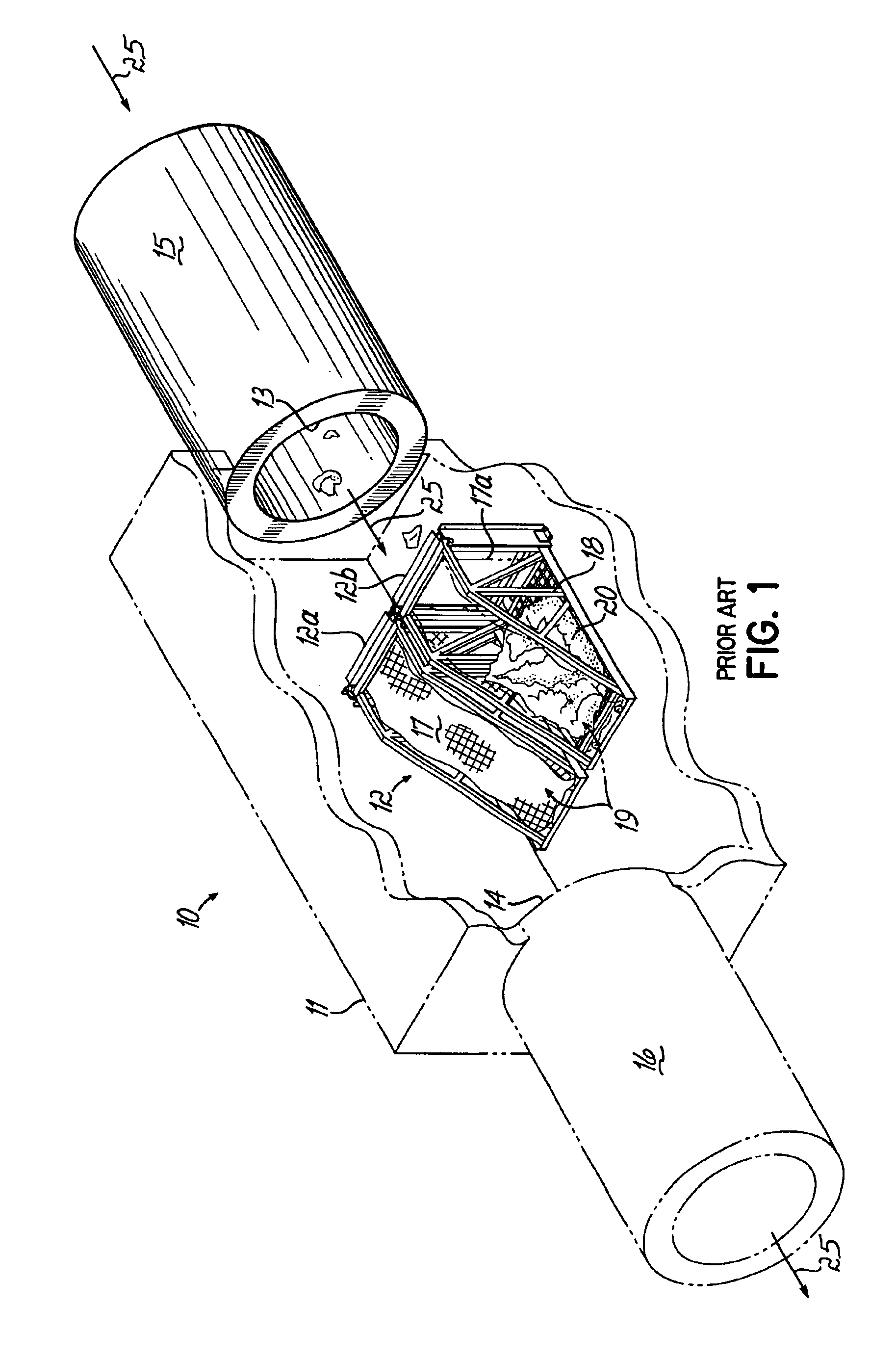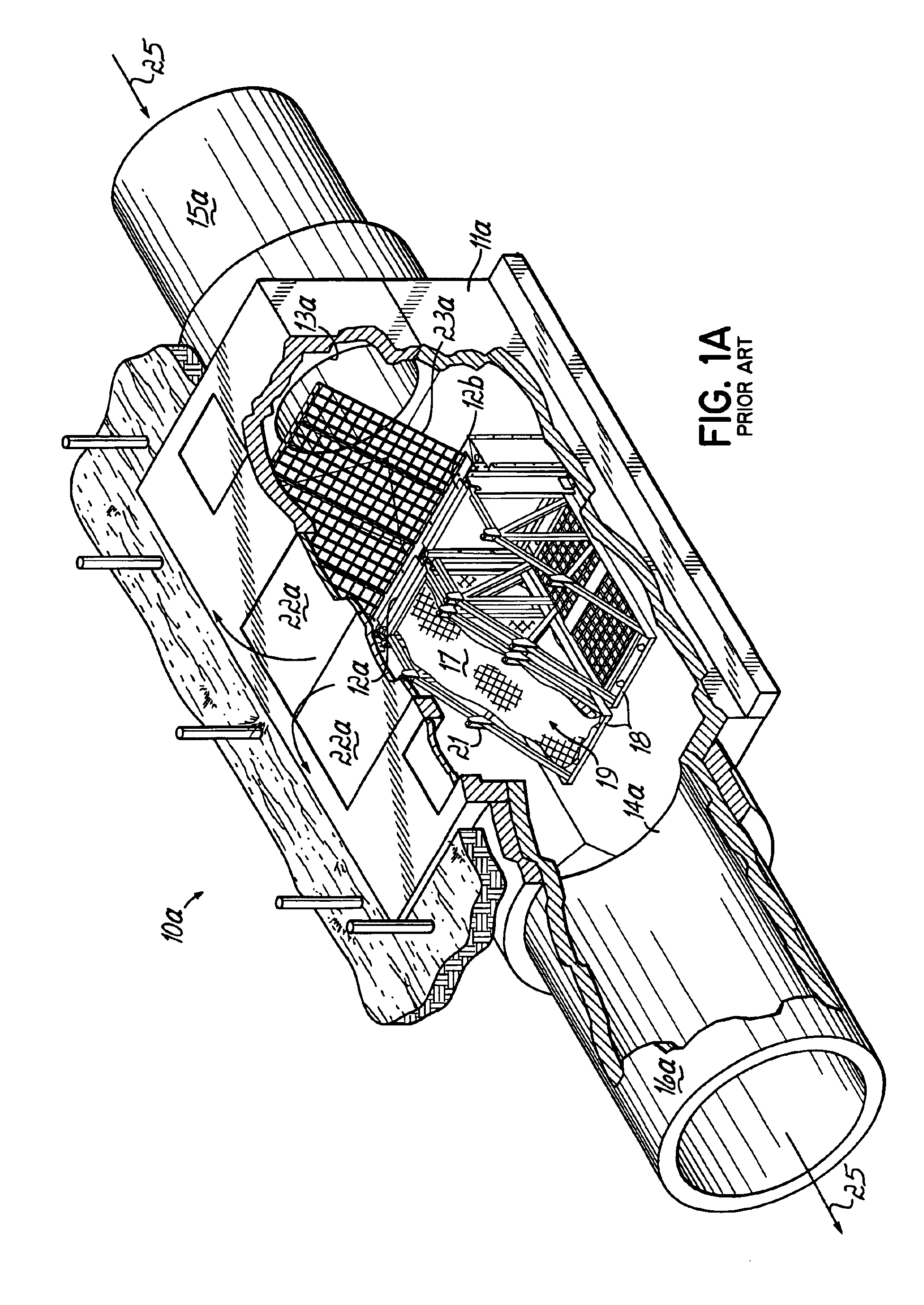Disposable net assemblies for apparatus for collecting floating debris
a technology of floating debris and nets, which is applied in the direction of sedimentation settling tanks, separation processes, filtration separation, etc., can solve the problems of reducing the overall effective area of the filter, excessive extreme forces, and floatable material filling of the net, etc., to achieve convenient replacement, strong and reliable, and easy construction
- Summary
- Abstract
- Description
- Claims
- Application Information
AI Technical Summary
Benefits of technology
Problems solved by technology
Method used
Image
Examples
Embodiment Construction
FIG. 1 illustrates the basic components of one system 10 of the prior art described in the background of the invention above. The system 10 includes one or more traps 12, illustrated as two in number, separately designated as traps 12a and 12b. The traps 12a,12b are located within a flow constraining housing or enclosure 11 between inlet 13 and outlet 14 thereof. The inlet 13 and the outlet 14 are each respectively connected in a known manner to conduits 15 and 16, which may be storm drain or combined sewer conduits or other structures or the terrain of the site. The traps 12a,12b each include a netting assembly 19 formed of a bag-shaped mesh net 17 that is attached to a lifting basket 18. Each of the netting assemblies 19 captures and holds floatable velocity borne debris 20 entering enclosure 11 through inlet 13. The arrows 25 indicate the direction of water flow.
Perforations or openings in nets 17 may vary in size depending on the intended use, with sizes generally in the range o...
PUM
| Property | Measurement | Unit |
|---|---|---|
| Force | aaaaa | aaaaa |
| Strength | aaaaa | aaaaa |
| Stress optical coefficient | aaaaa | aaaaa |
Abstract
Description
Claims
Application Information
 Login to View More
Login to View More - R&D
- Intellectual Property
- Life Sciences
- Materials
- Tech Scout
- Unparalleled Data Quality
- Higher Quality Content
- 60% Fewer Hallucinations
Browse by: Latest US Patents, China's latest patents, Technical Efficacy Thesaurus, Application Domain, Technology Topic, Popular Technical Reports.
© 2025 PatSnap. All rights reserved.Legal|Privacy policy|Modern Slavery Act Transparency Statement|Sitemap|About US| Contact US: help@patsnap.com



